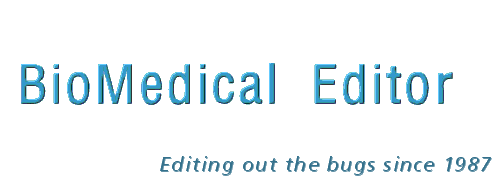
| ||
Editing and Proofreading MarksEditing marks and proofreading marks (also called proofreaders' marks) are instructions—symbols and short notations—that indicate what changes should be made to text and where precisely to make them. On paper, editing marks are placed directly in and above lines of text because an editor (usually) works on a double-spaced manuscript, where room is available between lines to indicate extensive revisions if necessary. Proofreading marks, however, must be placed in two places on the page: in the margins to identify the nature of the corrections, and in the corresponding line of text to show their exact location. Why must proofreaders' marks be added to the margins? The main reason is that they are easy to find on the page proofs (final form of text and illustrations for publication) that proofreaders typically work on. Whoever then enters the corrections can quickly scan the margins for corrections. Page proofs cannot easily accommodate extensive in-line corrections—nor should they. At this stage, anything more than minor revisions is costly. Author as ProofreaderKnowing how to proofread, and how to use proofreading marks, is not the domain of editors, proofreaders, and typesetters alone. If you are an author whose manuscript is accepted by a biomedical journal or book publisher, you are often responsible for correcting the page proofs of your work. You may not be required to have the same thorough knowledge about proofreading that full-time proofreaders have, of course. But familiarity with common proofreading symbols and techniques can help you to proofread your work effectively. This advantage is never more obvious than when time constraints enter the process. Journal publishers, for instance, typically require proofs to be returned quickly, often within 72, 48, or even 24 hours. The time to learn how to proofread may not be when those page proofs come knocking at your door! In the following two sections, I have put together sample proofreading marks and tips that have proved valuable in my own proofreading work. I hope you find them useful. Before viewing them, consider these important points:
Sample Proofreading MarksProofreaders use common notations and symbols, although some may differ slightly from publisher to publisher (more so between North American and British publishers). If your publisher provides instructions on specific proofreading symbols, be sure to follow them closely. The following downloadable PDF file shows common proofreaders' marks as applied to portions of medical text. You are welcome to print a copy of the PDF file or to save a copy to your computer to view and print later. To open the file in your browser window, click on the following link: Proofreading Marks at a Glance
To download the file to view later, right-click on the link and select Save Target As or Save File As or Save Link As. If you have a question about proofreading marks that are not shown in the PDF markup (and not every mark is shown), please contact me and I'll do my best to help. Instructions for Opening the PDFTo open the PDF, you will need to install Adobe Reader (latest version recommended). You can get the free Adobe Reader here (a new window will open so that you can download it without leaving this page). After you have installed it, you should be able to open the PDF file in your browser window and download it to your computer. Proofreading TechniquesProofreading requires concentration, patience, and a bit of time. Keep in mind, first, that the page proof stage will be your last opportunity to eliminate errors before the document goes to print. Second, revisions to page proofs can be expensive. For this reason, publishers usually have specific guidelines about what types of corrections are permitted. Read the publisher's instructions carefully before you begin. For specific ideas on proofreading methods, please read My 15 Best Proofreading Tips. Do you have a question about proofreading symbols? Would you like more information about science or medical editing services? Please contact me online. |
|
|
|
|
||
|
Professional Service... Personal Approach
Copyright © 2006 - 2024 - BioMedical Editor - All Rights Reserved | ||